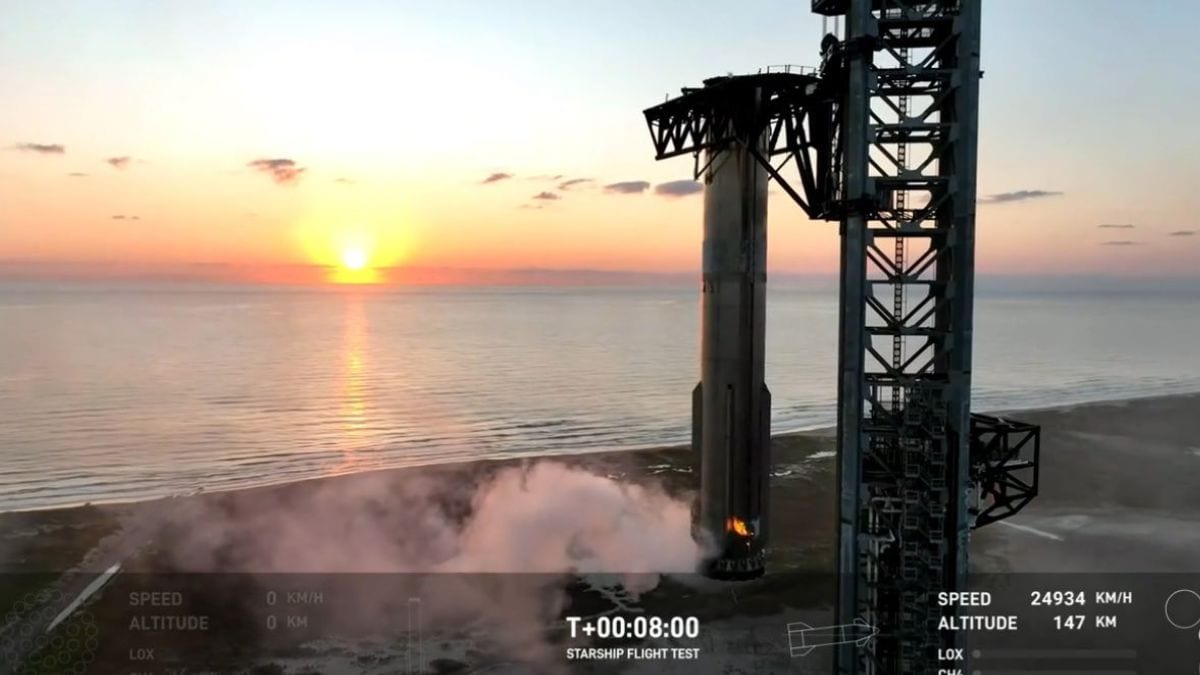On Sunday, a significant milestone was reached in the realm of space exploration as SpaceX conducted its fifth test of the Starship rocket, the world’s most powerful and heaviest rocket. Elon Musk’s aerospace company achieved a major success with the booster returning safely to the launch site after the mission, a critical advancement towards humanity’s future journey to Mars.
The Starship vehicle, towering at 400 feet (122 meters), took off at approximately 6 PM Indian time from the Starbase launch site located in South Texas, USA. The primary aim of the mission was to successfully return the first stage booster, known as Super Heavy, to its launch mount. This goal was accomplished as expected, marking a significant achievement in reusable rocket technology.
Successful Booster Recovery
Reports indicate that roughly seven minutes post-liftoff, the Super Heavy booster successfully landed on the launch tower. An intricate system placed on the tower ensured that the booster was captured safely. During the live commentary, a SpaceX engineer expressed excitement, declaring it “a day for the engineering history books.” The atmosphere at SpaceX was electrifying, as employees erupted in cheers and slogans, and a spokesperson described the event as “magical.”
Starship’s Flight and Ocean Splashdown
The success of SpaceX extended beyond the booster recovery. The first stage booster propelled a 165-foot-tall upper stage, known as Starship, into the sky. The plan included Starship traveling through space for approximately 65 minutes and then firing its engines to execute a splashdown in the Indian Ocean. The mission proceeded smoothly, with Starship hovering over the ocean post-touchdown.
Understanding the Starship Rocket
Starship operates as a reusable rocket, designed primarily for deep space travel. It comprises two main segments: the passenger section, intended to accommodate crew and cargo, and the Super Heavy rocket booster. In total, the combined length of Starship and its booster is approximately 400 feet (122 meters), and their total weight is around 5 million kilograms (11 million pounds).
| Feature | Specification |
|---|---|
| Height | 400 feet (122 meters) |
| Total Weight | 50 lakh kilograms (approximately 5 million kg) |
| Thrust Capability | 16 million pounds (70 meganewtons) |
| Comparison | Almost double that of NASA’s Space Launch System (SLS) rocket |
This impressive thrust capability positions Starship as a leading contender in space exploration, poised for both crewed missions to Mars and other ambitious interplanetary endeavors. SpaceX’s commitment to reusability and efficiency not only paves the way for future exploration but also holds the potential to revolutionize space travel as we know it.












